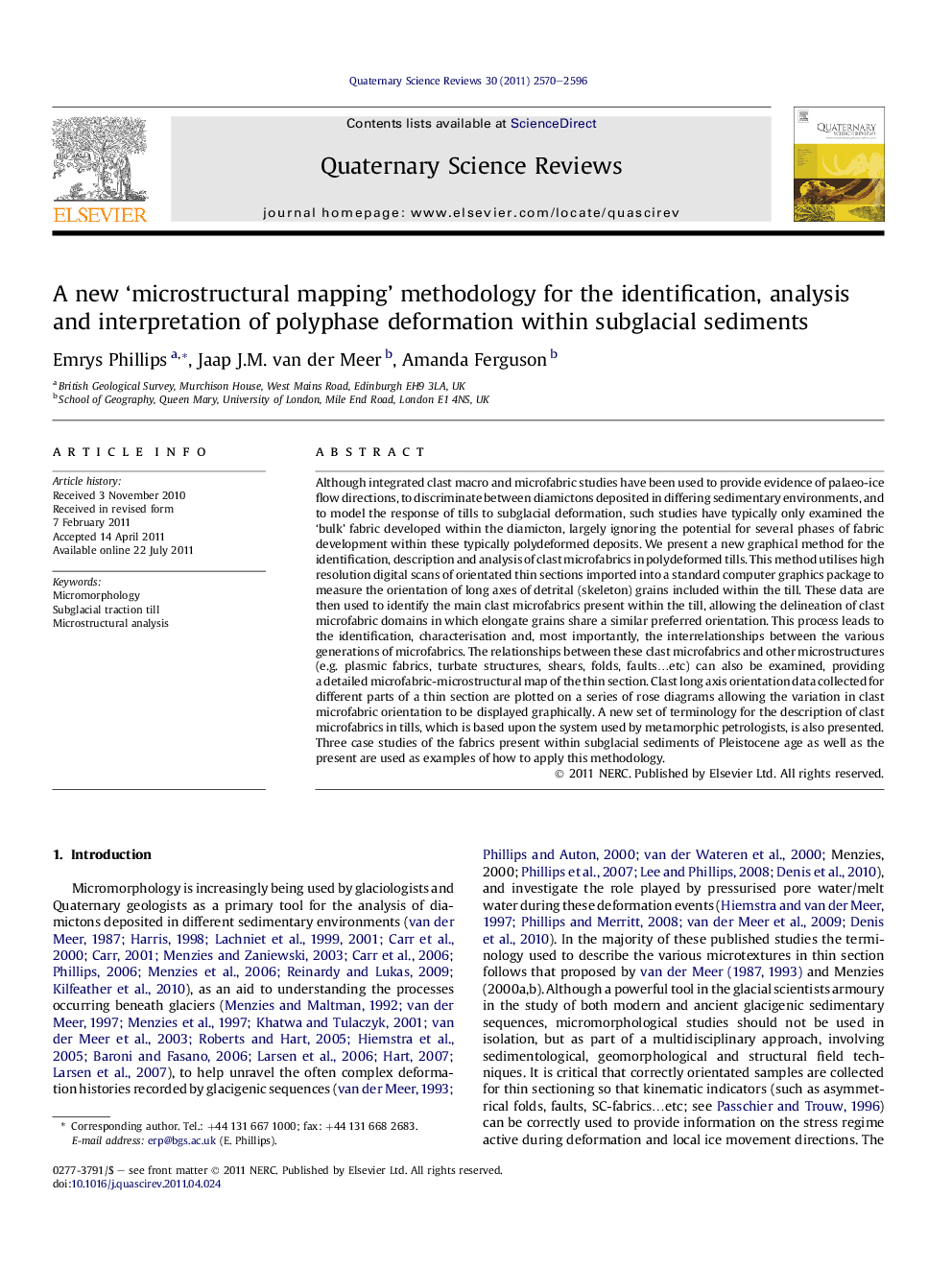| Article ID | Journal | Published Year | Pages | File Type |
|---|---|---|---|---|
| 4736717 | Quaternary Science Reviews | 2011 | 27 Pages |
Although integrated clast macro and microfabric studies have been used to provide evidence of palaeo-ice flow directions, to discriminate between diamictons deposited in differing sedimentary environments, and to model the response of tills to subglacial deformation, such studies have typically only examined the ‘bulk’ fabric developed within the diamicton, largely ignoring the potential for several phases of fabric development within these typically polydeformed deposits. We present a new graphical method for the identification, description and analysis of clast microfabrics in polydeformed tills. This method utilises high resolution digital scans of orientated thin sections imported into a standard computer graphics package to measure the orientation of long axes of detrital (skeleton) grains included within the till. These data are then used to identify the main clast microfabrics present within the till, allowing the delineation of clast microfabric domains in which elongate grains share a similar preferred orientation. This process leads to the identification, characterisation and, most importantly, the interrelationships between the various generations of microfabrics. The relationships between these clast microfabrics and other microstructures (e.g. plasmic fabrics, turbate structures, shears, folds, faults…etc) can also be examined, providing a detailed microfabric-microstructural map of the thin section. Clast long axis orientation data collected for different parts of a thin section are plotted on a series of rose diagrams allowing the variation in clast microfabric orientation to be displayed graphically. A new set of terminology for the description of clast microfabrics in tills, which is based upon the system used by metamorphic petrologists, is also presented. Three case studies of the fabrics present within subglacial sediments of Pleistocene age as well as the present are used as examples of how to apply this methodology.
► We present a new technique for the microstructural analysis of glacial sediments. ► It facilitates the characterisation and interpretation of subglacial deformation. ► Provides new insights into subglacial processes. ► Three case studies illustrate the potential of this technique to glacial studies.
